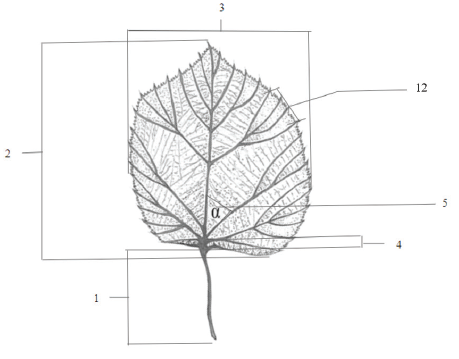Preliminary research of morphological traits of silver linden (Tilia tomentosa Moench) leaves in Bosnia and Herzegovina and Serbia
DOI:
https://doi.org/10.7251/GSF2131065VKeywords:
morphological traits of leaves, Tilia tomentosa, variabilityAbstract
Silver-leaf linden (Tilia tomentosa Moench.) is considered as a valuable tree species in the context of climate change due to its adaptation to dry and warm conditions in Central and Southeastern Europe. It is also highly valued in horticulture. The study aims to determine the interpopulation and intrapopulation variability of leaves of silver-leaf linden in Bosnia and Herzegovina and Serbia. In this research, we collected silver-leaf linden leaves from the Sana river valley (two localities), the Neretva river canyon (two localities), and “Fruška Gora” National Park (two localities), including thirty trees per locality, and thirty leaves per tree. We measured: petiole length, leaf lamina length, leaf lamina width, the distance of the first right developed nerve from the base of the leaf lamina, angle of the first right nerve with the central nerve, central nerve length. We calculated traits of leaf lamina length/ leaf lamina width ratio, leaf lamina width/ leaf lamina length ratio, total length of central nerve and petiole, central nerve length/ petiole length ratio, petiole length/total length of central nerve and petiole, and counted the number of primary teeth per 1 cm of leaf length. The average value of the petiole length for all populations was 40.3 mm, leaf lamina length 111.0 mm, leaf lamina width 90.7 mm, the distance of the first right developed nerve from the base of the leaf 0.3 mm, angle of the first right developed nerve with central nerve 47.7°, length of central nerve 90.4 mm, leaf lamina length/ leaf lamina width 1.3, leaf lamina width/ leaf lamina length 0.8, the total length of central nerve with petiole 130.7 mm, central nerve length/ petiole length 2.5, petiole length/total length of central nerve and petiole 0.3 (Table 1). The most had two primary teeth per 1 cm of leaf edge length (Table 2). Analysis of variance showed statistically significant differences among populations for all researched traits (Table 3), while Duncan’s test showed the separation of populations into separate groups for most traits. Baring in mind that silver-leaf linden is a species adaptable to climate change, melliferous and valued in horticulture, it is necessary to expand morphological research to a higher number of populations and conduct research at the molecular level.

Downloads
Published
Issue
Section
License
Copyright (c) 2021 Selma Vejzagić, Dalibor Ballian, Mirzeta Memišević Hodžić

This work is licensed under a Creative Commons Attribution 4.0 International License.